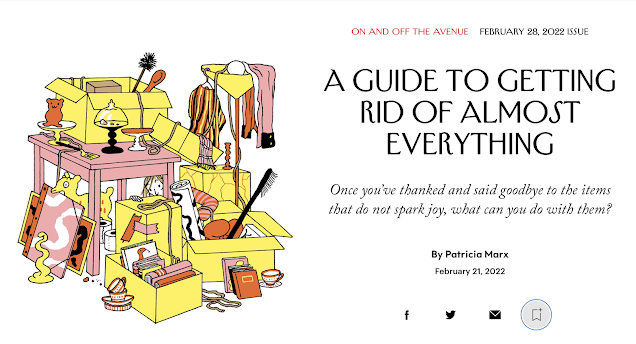Relaxed Real: Prices and pendants
As the holiday craft show season roars into gear, a word to the already wise: you can end up paying quite a bit and essentially subsidizing someone else's bauble.
I accompanied Anne to one of these shows; she was shopping for "relaxed real" jewellery for herself, and small gifts. ("Relaxed real" means noble metals, genuine but not precious stones, and other non-synthetic elements.)
She found a selection of pendants simply-set in silver, all priced at $125. (All prices in this post are in $CDN.)
The selection of 5mm stones included amethyst, citrine, blue topaz, cubic zirconia, rhodolite garnet and white freshwater pearl.
Assuming the same quality, which pendant is actually the most valuable? The garnet, with the topaz second, but the garnet is a natural colour; the topaz is irradiated to get that swimming-pool hue.
Amethyst and citrine are inexpensive, as is the 5mm white pearl. The cz is a synthetic worth pennies.
More than ever before, I'm seeing craft-show artisans mixing Swarovski crystal, imitation pearl and cz into their assortment, and though that is their aesthetic decision, the equalizing of price in the same item made in different 'stones' means you are paying more and getting less.
Anne, drawn by the sparkle, chose the cz—the worst choice value-wise. I estimate the total material cost is $17-$20 (or less in bulk), and the labour is low: the craftsperson pops the stone into a manufactured prong cup. At this price point, that kind of pendant is easy to find but I suspect in time it will end up at the bottom of the box.
Let's look at another option: the Sarracenia pendant by Montréal's Captv. (The Sarracenia is the floral emblem of Newfoundland and Labrador.)
Many craft show artisans price fairly and are more than willing to explain the relative value of various materials. But keep in mind the difference between hand-assembled and hand-made; this is one of the most important jewellery posts I've written.
I'm not suggesting you blow a bundle; you can find gorgeous pieces for under $100. This Tasci Designs handmade glass bead-pendant on a sterling snake chain ($CDN 75), might make it onto your gift list.
It's here—in an assortment of delicious palettes—and at the One of a Kind Show in Toronto, which opens on Nov. 21.
 |
| Rhodolite garnet pendant |
The selection of 5mm stones included amethyst, citrine, blue topaz, cubic zirconia, rhodolite garnet and white freshwater pearl.
Assuming the same quality, which pendant is actually the most valuable? The garnet, with the topaz second, but the garnet is a natural colour; the topaz is irradiated to get that swimming-pool hue.
More than ever before, I'm seeing craft-show artisans mixing Swarovski crystal, imitation pearl and cz into their assortment, and though that is their aesthetic decision, the equalizing of price in the same item made in different 'stones' means you are paying more and getting less.
Anne, drawn by the sparkle, chose the cz—the worst choice value-wise. I estimate the total material cost is $17-$20 (or less in bulk), and the labour is low: the craftsperson pops the stone into a manufactured prong cup. At this price point, that kind of pendant is easy to find but I suspect in time it will end up at the bottom of the box.
Let's look at another option: the Sarracenia pendant by Montréal's Captv. (The Sarracenia is the floral emblem of Newfoundland and Labrador.)
Yes, eagle-eyed readers, it costs more. But it is hand-cast, so has far more presence and originality. A freshwater pearl nestles in the centre of the blossom, and the piece is accented with your choice of stone: tsavorite garnet ($260); amethyst ($230); orange or purple sapphire ($260); peridot ($235)—and priced accordingly.
I'm not suggesting you blow a bundle; you can find gorgeous pieces for under $100. This Tasci Designs handmade glass bead-pendant on a sterling snake chain ($CDN 75), might make it onto your gift list.
It's here—in an assortment of delicious palettes—and at the One of a Kind Show in Toronto, which opens on Nov. 21.





Comments
I observed that people are drawn in to the high end, good design, well crafted, beautiful material items in the booth but few people will buy these items. The scaled down, less expensive materials, simpler (or easier to craft) items will be purchased as gifts for self or others: "impulse" buys. These items also serve as "marketing opportunities" for the more expensive items. (People use the artisan's contact information and buy the more expensive items or request custom orders months later.)
The cheap stuff pays the bills, especially for those who don't have an established reputation yet. If it is beautiful and well made, the reputation is not that they are cheap, but that they provide good design and craftsmanship.
And from the buyer’s standpoint, it is good to know what you are getting. So, I do not like one price when there is a real cost disparity in materials. I have seen both underpriced and overpriced, and everything in between. It is always best to know the relative value of materials and the amount of labour that certain techniques represent.
Some people expect ( unrealistically) low prices because they think no storefront should make the price really low.
There are two separate issues re the dolls: a matter of taste, and the intrinsic value of the materials and workmanship. In Paris, it is very hard to find French artisanal jewellery I call “relaxed real” and others call “ studio”. Some boutiques will have a little case of it, almost as an afterthought. What they do have is heaps of costume, and then a leap up to “bijoux prècieux”.